Solar eclipse of April 8
Discover the Finest Solar Viewing Kits for the April 8 Total Eclipse: Featuring Solar Glasses, Filters, Telescopes, and Binoculars.
Exploring the sun, our nearest star, often slips our minds during stargazing activities. This oversight is likely due to early life lessons warning us against direct solar gazing, and the fact that it disappears from the night sky. Yet, with the right equipment and knowledge, observing the sun can be a captivating and enjoyable pursuit.
Our comprehensive guide presents the premier solar viewing kits available for the anticipated total solar eclipse on April 8, 2024. The curated selection of specialist gear we feature ensures that you can witness this remarkable celestial event with safety and assurance. Our list includes an array of solar glasses, telescopes, binoculars, and solar filters, all chosen to enhance your solar eclipse viewing experience.
The eclipse’s path of totality, where the moon completely obscures the sun, will sweep across parts of North America and Canada. This awe-inspiring spectacle demands timely preparation to secure the proper equipment, as the event is fast approaching. Remember, the following total solar eclipse visible in the USA won’t occur until 2044.
Prioritizing safety is essential in solar observation to prevent severe and lasting eye damage. Direct solar viewing, or using a telescope or binoculars without a solar filter, is strictly inadvisable. We also offer guides on solar eclipse glasses and techniques for photographing a solar eclipse, which are worth exploring. For additional insights on solar viewing, refer to our detailed FAQs on the best solar viewing equipment located towards the end of this guide. To discover the optimal solar viewing kit for the upcoming eclipse, please continue reading below.
The best solar viewing equipment we recommend in 2024
DayStar Solar Glasses & Filter Kit
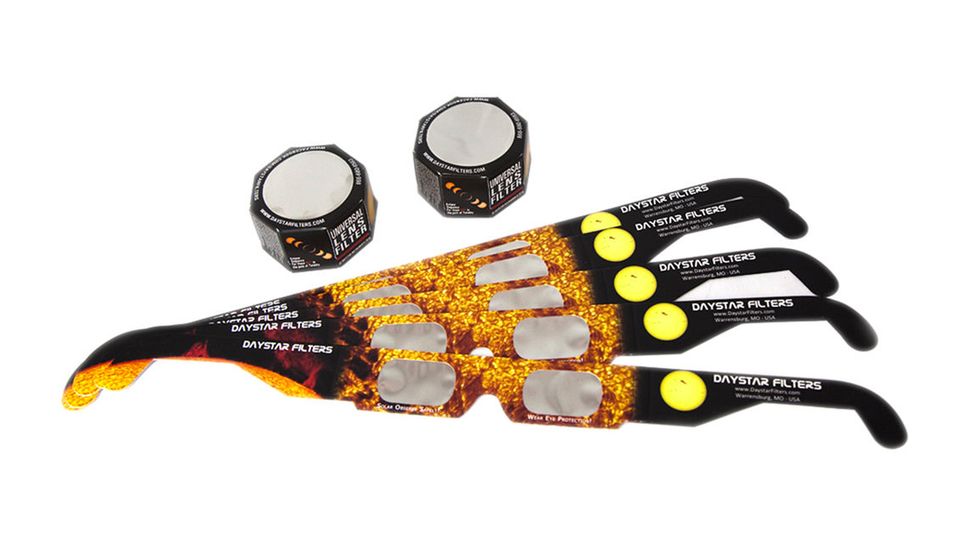
DayStar Filters offers a stellar selection of eclipse glasses and solar filters, perfect for engaging the whole family in safe solar viewing activities, including eclipses and sunspot observation. Prioritizing safety and clarity, these are an ideal choice for enthusiasts of all ages.
Crafted with top-tier solarite film, these eclipse glasses comply with ISO 12312-2 international safety standards, providing robust protection against harmful solar radiation. They effectively block out 99.999% of intense sunlight and 100% of damaging UV rays, making them perfect for both observing and photographing solar phenomena securely.
The glasses boast a design that’s both comfortable and lightweight, ensuring ease of wear for prolonged stargazing sessions. The adjustable card stock frames feature dual creases, enabling a customizable fit for various face shapes and sizes, which is particularly beneficial for young astronomers.
Suitable for novices and seasoned stargazers alike, this kit includes five pairs of solar viewing glasses and two versatile 50mm universal lens filters, compatible with both binoculars and camera lenses. This makes for an excellent way to spark children’s interest in solar events, under adult supervision, without the concern of handling more delicate equipment like telescopes or binoculars.
Specifications
Reasons to buy
Affordable
Reasons to avoid
Not suitable for telescopes
Buy now
Celestron EclipSmart 2x Power Viewers
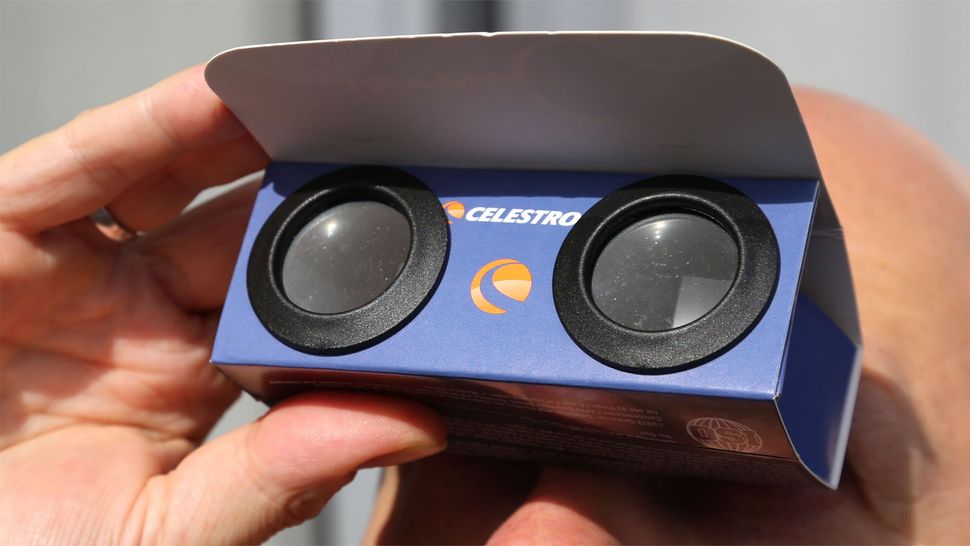
For those seeking an upgrade from standard solar glasses, the Celestron EclipSmart 2x Power Viewers are an exceptional choice. Ideal for both novices and seasoned skywatchers, these viewers offer 2x magnification for a more detailed observation of solar phenomena.
Our in-depth review of the Celestron EclipSmart 2x Power Viewers reveals their suitability for those desiring an intimate glimpse of the sun, sans the need for specialized solar eclipse binoculars. Equipped with a pair of compact lenses set before larger solar filters, they adhere to the ISO 12312-2 standards. The lenses, crafted from a uniform polymer, render the sun in a distinct orange hue, allowing for the discernment of subtle sunspots and delicate solar filaments. A note of caution: the fixed lens spacing may result in double vision, yet the overall visual experience is impressive.
Included in the Celestron EclipSmart 2x Power Viewers Solar Eclipse Observing Kit is a robust, foldable map. This laminated guide details the U.S. eclipse trajectory, proving somewhat perplexing for the 2023 eclipse but invaluable for the forthcoming Great North American Eclipse in April 2024. The kit comes with two viewers, perfect for shared experiences among couples or friends.
For those who prefer standard magnification or need additional pairs for group viewing, Celestron also offers a Solar Eclipse Glasses Viewing Kit, which contains four pairs of conventional solar glasses.
Specifications
Reasons to buy
Sharp, clear views of the solar disk+
Reasons to avoid
Can produce double-vision
Buy now
Celestron EclipSmart Travel Solar Scope 50
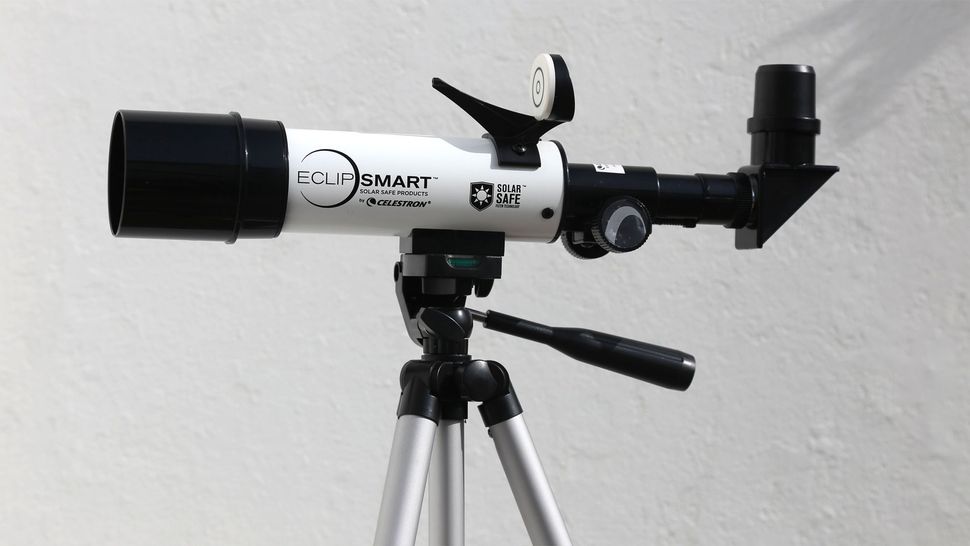
Discover the Celestron EclipSmart Solar Telescope 50, the perfect companion for effortless and secure solar exploration. This compact and lightweight telescope is designed for portability, complete with a convenient backpack for on-the-go adventures. Its cost-effective nature doesn’t compromise on quality, offering built-in white light filters and a superior finderscope for precision viewing. Our comprehensive review confirms its top-notch performance.
Embark on a celestial journey with the Celestron EclipSmart Travel Solar Scope 50, your go-to telescope for solar events. Boasting up to 18x magnification, it’s an invaluable tool for spotting intricate sunspots. The integrated solar filter meets the ISO 12312-2 standard, ensuring protection against IR, UV, and 99.99% of intense sunlight. Ideal for both young astronomers and the forgetful, its fail-safe design prevents mishaps with the solar filters. While it’s tailored for solar viewing, its versatility may be limited, but it excels as a self-sufficient, accessory-free device.
Setting up the Celestron EclipSmart Travel Solar Scope 50 is a breeze, making it a favorite among astronomy enthusiasts, especially beginners. It arrives with a backpack and tripod, enhancing its appeal for eclipse chasers. However, the tripod’s durability could be improved.
For optimal sunspot visibility and eclipse tracking, the 18x magnification is a standout feature. Stability is key, so ensure a steady setup, particularly on windy days. For an immediate upgrade, consider coupling it with a premium tripod for unmatched stability and clarity.
Specifications
Reasons to buy
Simple and safe to use
Reasons to avoid
Wobbly tripod
Explore the sun’s intricate details with the iOptron 80mm White Light Solar Telescope, a stellar choice for solar enthusiasts. Equipped with a robust SolarLite white light filter, this telescope boasts a 60mm clear solar filter aperture, dual eyepieces, and an impressive maximum magnification of 189x, making it a standout option for solar observation.
The telescope’s 80mm objective lens paired with a short 400mm focal length (f/5.0) captures wide sky vistas, ideal for viewing larger astronomical phenomena. Its unique feature is the detachable 60mm solar filter, offering the flexibility to use the telescope for nocturnal stargazing and daytime terrestrial explorations, from birdwatching to landscape surveying.
This versatile instrument excels in solar observation and goes beyond to provide vivid views of our solar system’s wonders. From the dynamic phases of the Moon to the grandeur of Saturn’s rings and Jupiter’s satellites, the telescope presents the cosmos with clarity and detail. It’s also adept at unveiling the beauty of star clusters, nebulae, and distant galaxies.
While it doesn’t include a mount or tripod, this opens up the possibility to customize your setup with various mounting options, tailoring it to your preferences and enhancing your astronomical journey.
Specifications
Reasons to buy
Reasons to avoid
Buy now
Celestron EclipSmart 10×25 Solar Binoculars
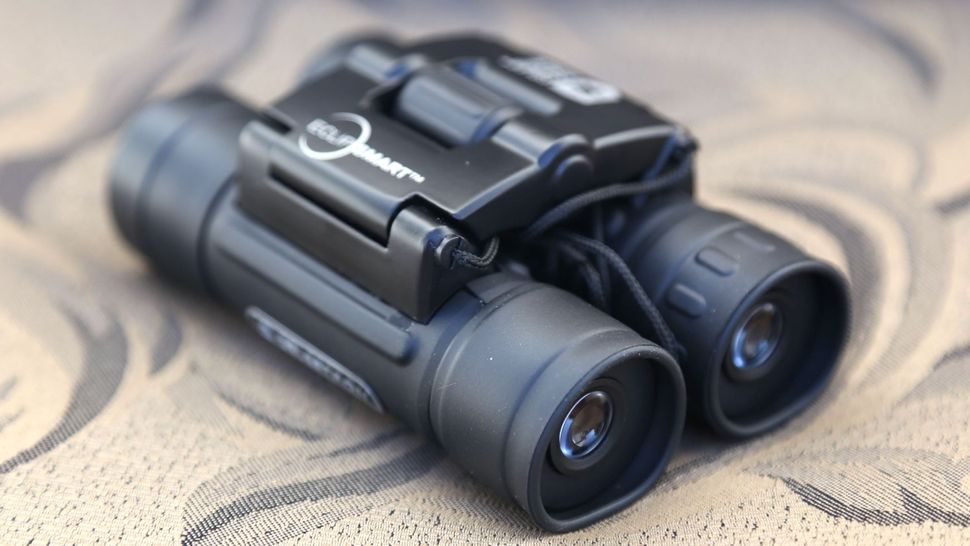
Elevate your solar viewing experience with the Celestron EclipSmart 10x25mm solar binoculars, a step above traditional solar eclipse glasses. These binoculars offer a glimpse of sunspots with a blue-tinted white image, thanks to their 10x magnification. This feature, along with a 57-degree field of view, simplifies the process of locating and tracking the sun’s path during an eclipse.
Designed for ultimate convenience, the Celestron EclipSmart 10x25mm solar binoculars are as compact and lightweight as a smartphone, making them the ideal travel companion. Despite a basic neck strap, their lightness ensures comfort during lengthy solar events.
Equipped with fixed polymer solar filters that adhere to the ISO 12312-2 standard, these binoculars protect your eyes by blocking IR, UV, and 99.99% of visible light. While lens caps and generous eye relief would be beneficial, the binoculars’ straightforward design is effective for eclipse tracking.
In summary, the Celestron EclipSmart 10x25mm solar binoculars are an excellent, budget-friendly choice for the next solar eclipse. They’re user-friendly, waterproof, and come with a handy neoprene pouch, belt loop, and cleaning cloth, making them a practical addition to any eclipse enthusiast’s gear.
Specifications
Reasons to buy
Reasons to avoid
Celestron EclipSmart 12×50 Solar Binoculars
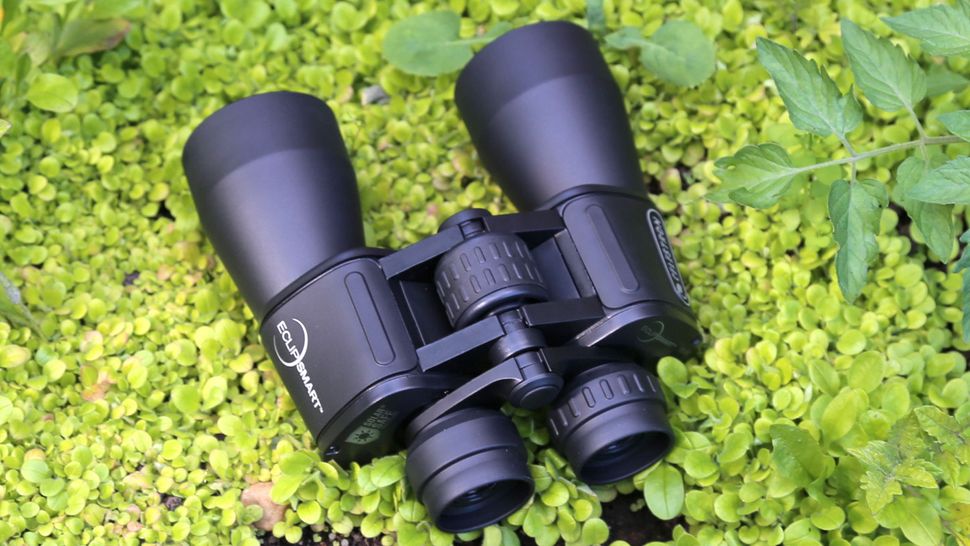
For those seeking a superior solar observation experience, the Celestron EclipSmart 12×50 Porro Solar Binoculars are a substantial upgrade from the 10×25 model. These larger binoculars are acclaimed by eclipse enthusiasts for their enhanced views and are equipped with polymer glass solar filters that comply with the ISO 12312-2:2015(E) safety standard. Despite the lens caps being prone to misplacement due to their detachable nature, and the neck strap’s slim design, these issues are minor compared to the binoculars’ overall performance.
Our hands-on review revealed that these binoculars provide exceptionally detailed views of sunspots on the solar surface, with minimal color fringing that does not detract from the overall experience. Due to their weight and size, we recommend using them with a sturdy tripod for the best experience, particularly during extended solar observations like eclipses. They come equipped with a tripod adapter for easy mounting.
The higher magnification may present a challenge in initially locating the sun, but with a little patience and practice, the Celestron EclipSmart 12×50 Porro Solar Binoculars prove to be an invaluable tool for both amateur and seasoned skywatchers alike.
Specifications
Reasons to buy
Reasons to avoid
Enhance your existing binoculars for solar observation with the Baader Planetarium Binocular Filter. This white light filter is expertly crafted to attach seamlessly to your binoculars, ensuring safe and clear views of the sun.
The Baader Solar Filters are distinguished by their use of AstroSolar Safety Film OD 5.0, which allows for secure solar imaging without compromising on image quality — a common issue with other filters that can stretch and distort the film. These filters are designed for sharp, high-magnification views.
Accompanied by a complete set of mounting accessories, including centering bolts, sliding washers, fasteners, and safety straps, the filters are available in a variety of sizes to fit your needs, with 50mm being the commonly offered standard.
Installation and removal are straightforward, thanks to their robust construction and adjustable ‘feet’ that cater to different lens sizes. While they may not fit back into their original box once assembled, a dedicated storage solution would be a welcome addition.
Please note that Baader Solar Filters are sold individually, so if you’re planning to use them with binoculars, you’ll need to purchase a pair. Additionally, these filters should not be used with cameras that have an optical viewfinder; they are suitable for use with mirrorless cameras, but always verify if your DSLR has an optical or electronic viewfinder before use.
Specifications
Reasons to buy
Reasons to avoid
Enhance your solar viewing experience with a top-tier accessory for your telescope. Instead of investing in a new solar telescope, consider the Celestron EclipSmart Safe Solar Eclipse Filter, a practical addition that easily affixes to your existing telescope, spotting scope, or camera. This filter offers a secure fit, adjustable side panels, and an elastic band to ensure it stays in place. Once your celestial session concludes, the filter conveniently folds for storage in the provided transparent plastic pouch, and you’re covered with a 2-year warranty for peace of mind.
Designed for objective lenses measuring 75mm to 100mm in diameter, the Celestron EclipSmart Filter is versatile, fitting over housings, sunshades, and dew shields. It meets the ISO 12312-2:2015(E) safety standard, effectively blocking 99.999% of intense solar light and harmful IR and UV rays, safeguarding both your vision and equipment.
In contrast to the Baader white light filter, the Celestron EclipSmart Filter imparts an orange hue for a more authentic solar image. It’s not only suitable for eclipses; this filter allows for daily sun observations. However, its card stock construction, with the filter element at the center, suggests it may not endure through extensive use. For those seeking a more durable solution, stay tuned for the next recommendation on our list.
A critical reminder: never pair this Celestron filter with cameras that have an optical viewfinder. It’s compatible with the finest mirrorless cameras, but always verify if your DSLR features an optical or electronic viewfinder before use.
Specifications
Reasons to buy
Reasons to avoid
Buy now
Hoya Pro ND-100000 Solar Filter
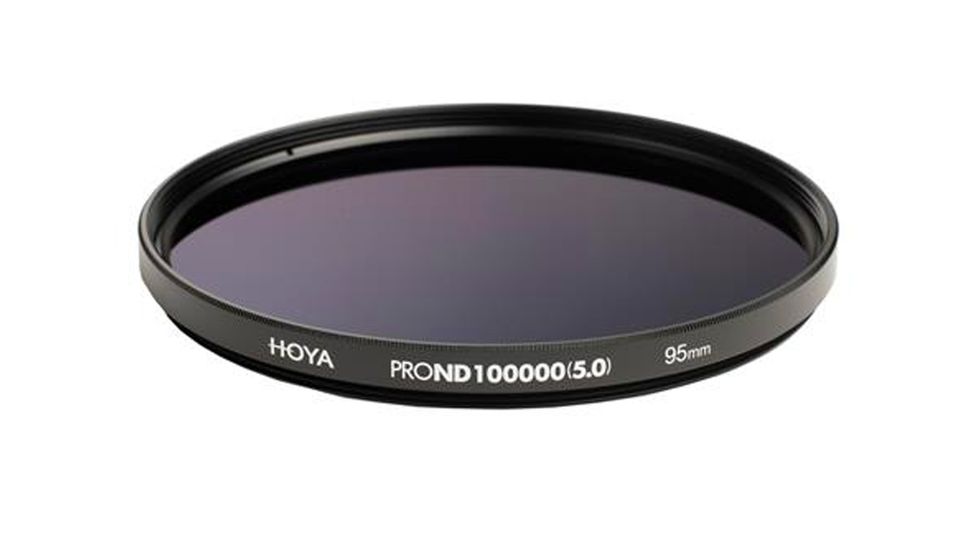
For photographers versed in using Neutral Density (ND) filters for capturing the serene beauty of long exposure shots in daylight, it’s crucial to understand that these filters are not designed for safe solar observation. The Hoya Pro ND 100000 Pro Solar Filter, however, is crafted specifically for photographing the sun. With a formidable filter factor of 100,000, it permits only a minuscule fraction of light to pass through—1/100,000 to be precise—equating to a substantial light reduction of over 16.5 stops. This level of darkness is essential to counter the sun’s dazzling brilliance, even during an eclipse. It’s important to note that while this filter excels in capturing solar images, it does not claim to shield against all harmful UV or IR rays, so direct solar viewing through the filter is not advised.
This filter boasts a special multi-coating process that ensures color neutrality and crisp imagery, allowing for prolonged exposures exceeding one hour under direct sunlight—just be cautious to prevent any potential damage to your camera’s sensor. It’s also adaptable for telescope use; ensure compatibility with your specific model before making a purchase.
Remember, the Hoya Pro ND 100000 Pro Solar Filter should not be used with cameras featuring an optical viewfinder. It pairs seamlessly with the finest mirrorless cameras, but double-check if your DSLR has an optical or electronic viewfinder. Additionally, this filter is not intended for direct eye protection during prolonged solar observations or eclipses.
Specifications
Reasons to buy
Reasons to avoid
Buy now
FAQs
What type of telescope is best for solar viewing?
When it comes to solar observation, the choice between refractor and reflector telescopes isn’t about superiority, but suitability. Refractor telescopes are often favored for their closed optical tubes, which prevent stray light from disrupting the view. This design feature is particularly beneficial for solar viewing, ensuring a clearer and more contrasted image of the sun’s features. Additionally, solar filters can be more conveniently attached to refractors, enhancing their appeal.
On the other hand, reflector telescopes are no strangers to solar observation. With the right solar filters and safety protocols in place, they too can provide stellar solar views. Ultimately, the best telescope for observing the sun is the one that is properly equipped and safely used, regardless of its type.
How do I view the sun with a telescope?
Exploring the sun’s surface with a telescope can be done in two primary ways, each with its own benefits. The first method involves direct observation through the telescope, equipped with a specialized solar filter affixed to the front. This filter is crucial as it blocks the majority of the sun’s harmful ultraviolet, visible, and infrared rays, while also shielding the telescope from excessive heat. The alternative method is solar projection, where the sun’s image is cast onto a screen without a filter. This technique eliminates the danger of accidental direct solar viewing and allows multiple people to simultaneously enjoy the spectacle of the sun. Both methods are effective, but always prioritize safety when observing our closest star.
What aperture telescope will I need?
For amateur astronomers, the quest to observe the cosmos doesn’t require a large aperture. The telescope you already possess is likely to be perfectly adequate for your stargazing needs. Apertures within the 50-80 mm range are typically sufficient, providing a clear view of the night sky’s wonders without the need for professional-grade equipment.
What magnification do I need in a telescope or binoculars?
Optimal magnification is key to observing the intricate details of the Sun’s surface. When conditions are favorable, utilizing higher magnification levels can enhance the visibility of minute spots and pores. However, caution is advised as there is a possibility of confusing a pore for a spot. To ensure precise identification, it’s recommended to employ medium to high magnification settings. This allows for a clear distinction between pores and sunspots, which might be challenging at lower magnifications.
For a comprehensive solar observation, it’s beneficial to vary the magnification. Begin with a low magnification range of 40x to 50x, progressing to 60x to 70x, to capture an overview of the Sun and identify prominent spot clusters. When the viewing conditions are optimal, increase to a higher magnification of 80x to 90x. This adjustment is crucial for spotting smaller formations, conducting an accurate spot count, and differentiating between sunspots and pores.
The formula to determine magnification is straightforward: simply divide the objective’s focal length by the eyepiece’s focal length, expressed as
Magnification=Focal Length of Objective / Focal Length of Eyepiece
How do I safely use a solar filter?
Before embarking on solar observations, it’s crucial to ensure your equipment is prepped and safe. Begin by positioning the instrument away from the Sun as you remove the dust cover and install the solar filter. It’s imperative to inspect the solar filter for any imperfections each time before use.
Initiate the safety check by examining the solar filter for any fractures or peeling in its reflective surface. Position the filter towards the Sun, confirming it stands between your vision and the solar rays. Should you detect sunlight penetrating through any area larger than a minuscule pinhole, refrain from using the filter as it’s time for a replacement.
Secure attachment of the filter to your instrument’s forefront is essential, guaranteeing it remains in place during solar alignment and preventing accidental detachment. This practice is not only vital for the integrity of your observations but also for the protection of your eyesight.
How do I set up the projection screen for viewing on a telescope?
For optimal viewing of celestial bodies, a 6-inch (150mm) diameter image strikes the perfect balance, offering both luminosity and sharpness. An overly large image may appear dim and lack detail, while a smaller one might not reveal the finer aspects of smaller celestial features.
To project an image with a diameter of 150mm, you can use the following formula to calculate the required distance (in mm) between the eyepiece and the projection screen:
Distance=f(16050F+1)
Where:
- ( f ) represents the eyepiece’s focal length,
- ( F ) denotes the telescope’s focal length in millimeters.
This formula ensures that you achieve the desired image size for a clear and detailed observation experience.
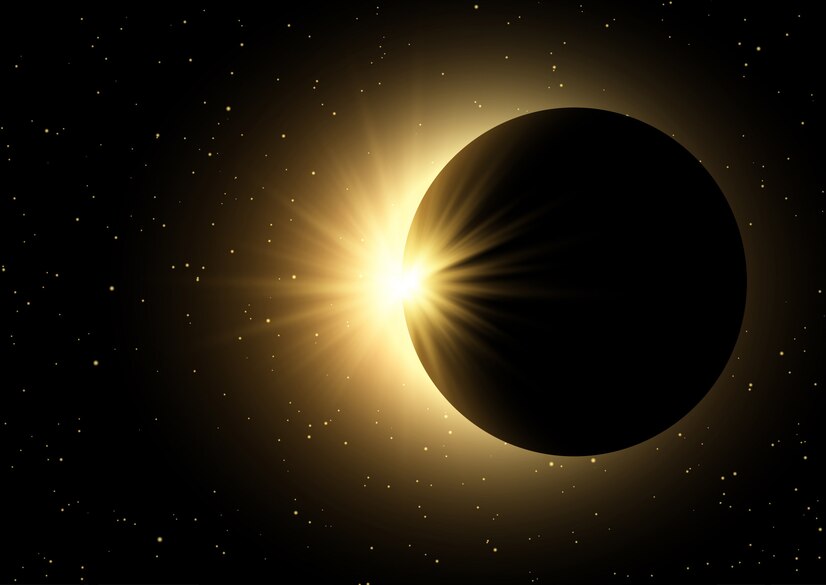
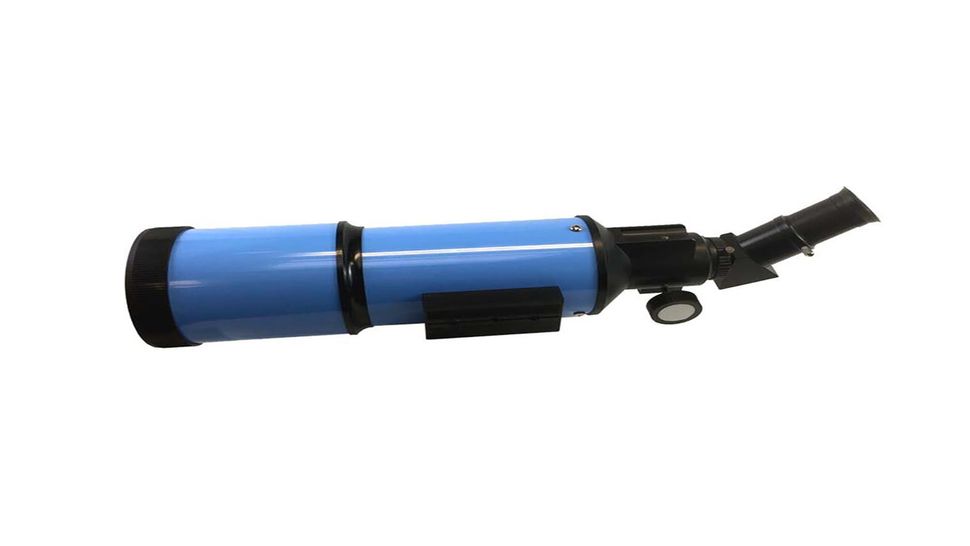
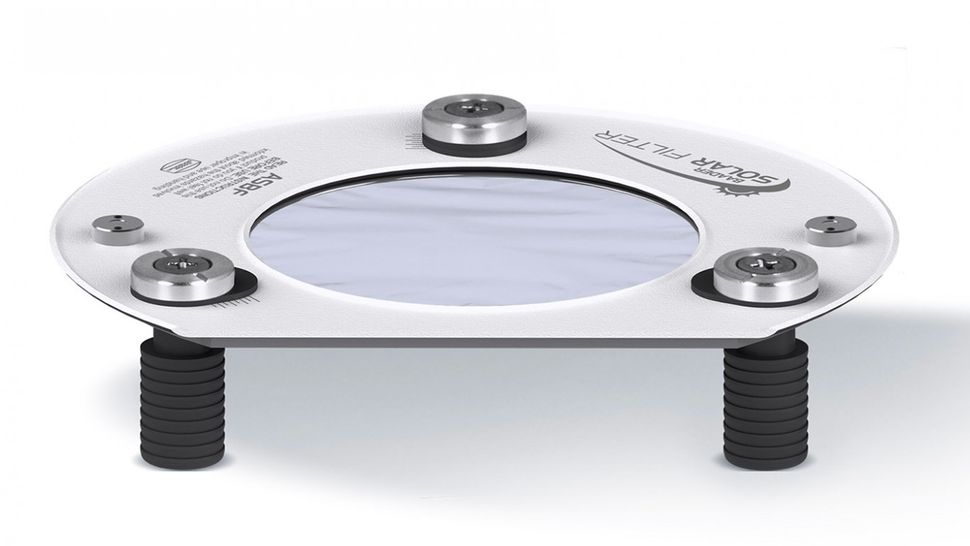
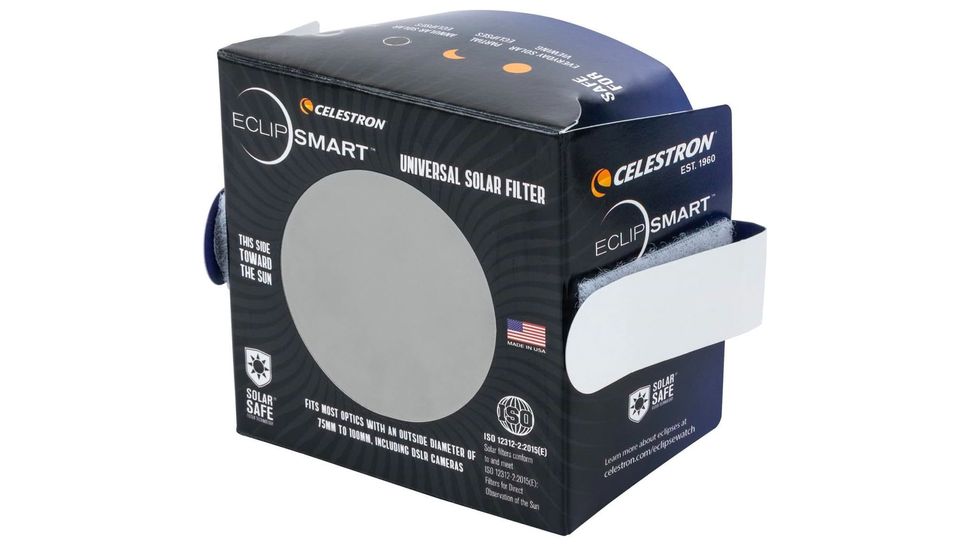




Leave a Reply